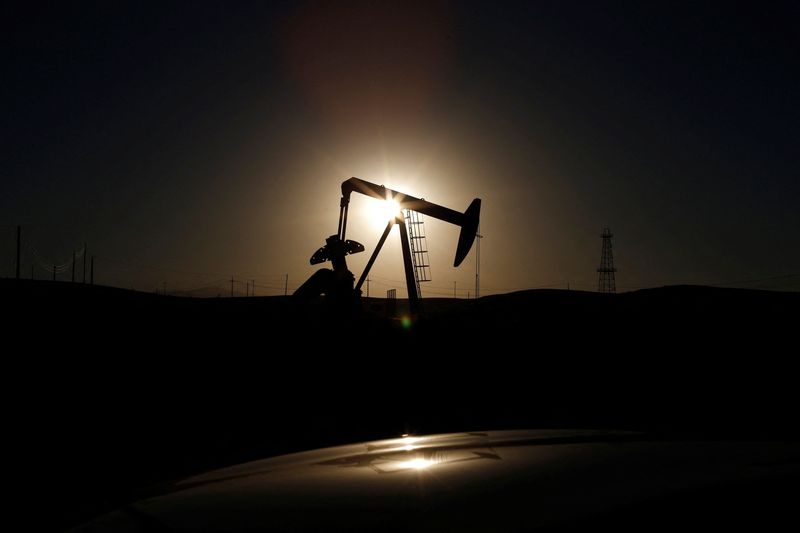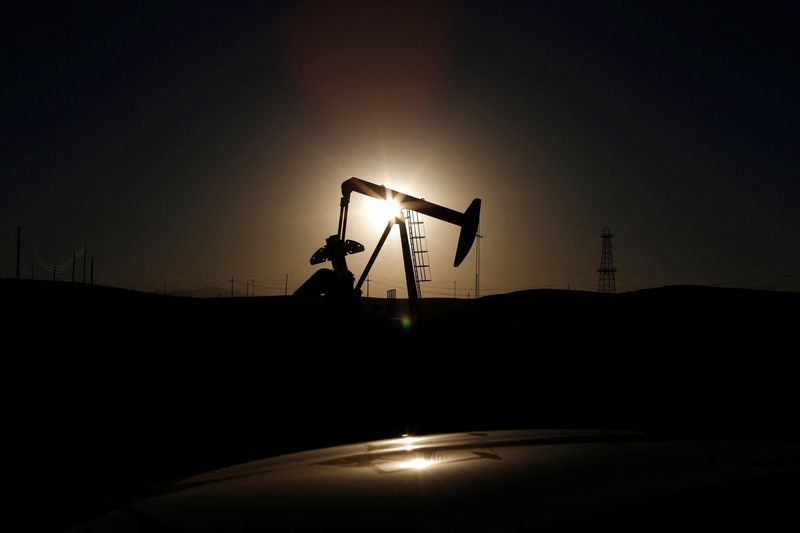Commodities
Oil rally pauses as investors await Israeli response

By Arunima Kumar
LONDON (Reuters) -A rally in oil prices took a break on Tuesday as the market waits for Israel’s response to last week’s Iranian rocket attacks that prompted a price surge on concerns of a broader conflict in the Middle East.
Both benchmark contracts rose more than 3% on Monday to their highest since late August, adding to last week’s rally of 8%, the biggest weekly gain in over a year, on concerns that hostilities could disrupt oil supplies from the Middle East.
futures were down $1.60, or 2%, to $79.33 per barrel at 1218 GMT. U.S. West Texas Intermediate futures were down $1.60, or 2.07%, to $75.54 a barrel.
Brent surpassed $80 per barrel for the first time since August on Monday.
“While short-term upside pressure will likely be maintained until there is clarity on what Israel will do next, decline in Brent has shown that a rise above $80-82 per barrel will encounter resistance because demand uncertainties and oversupply permutations cannot be shaken off that easily,” Gaurav Sharma, an independent oil analyst in London said.
The oil price rally began after Iran launched a missile barrage on Israel on Oct. 1. Israel has sworn to retaliate and and said it was weighing its options, with Iran’s oil facilities considered a possible target.
“Oil can keep ascending only for so long purely based on perceptions and not actual supply disruption … although it would be irresponsible to claim that the dust has settled on Iran’s direct and ominous involvement in the conflict, but for now the threats of Israeli assaults on Iranian oil infrastructure have not materialized yet,” said Tamas Varga of oil brokerage PVM.
However, some analysts said an attack on Iranian oil infrastructure was unlikely and warned oil prices could face considerable downward pressure if Israel focuses on any other target.
China was also in focus after it said on Tuesday it was “fully confident” of achieving its full-year growth target but refrained from introducing stronger fiscal steps, disappointing investors who had banked on more support for the economy.
“Oil prices are suffering from a risk-off environment, likely driven by some disappointment on the latest Chinese stimulus measure announcement,” said Giovanni Staunovo, an analyst at UBS.
Investors have been concerned about slow growth dampening fuel demand in China, the world’s largest crude importer.
In the United States, Hurricane Milton intensified into a Category 5 storm on its way to Florida after forcing at least one oil and gas platform in the Gulf of Mexico to shut on Monday.

Traders will also be looking out for the latest oil inventory data, with analysts expecting stocks to rise by 1.9 million barrels in the week ended Oct. 4, according to a preliminary Reuters poll.
The American Petroleum Institute is due to post its tally of U.S. stockpiles at 2030 GMT on Tuesday, followed by the official tally from the Energy Information Administration at 1430 GMT on Wednesday.
Commodities
Oil prices rise; U.S. crude inventories plunge, Russia-Ukraine truce eyed
Commodities
India’s Reliance to stop buying Venezuelan oil over US tariffs, sources say
Commodities
Oil prices climb on Venezuela supply worries

 Forex3 years ago
Forex3 years agoForex Today: the dollar is gaining strength amid gloomy sentiment at the start of the Fed’s week

 Forex3 years ago
Forex3 years agoUnbiased review of Pocket Option broker

 Forex3 years ago
Forex3 years agoDollar to pound sterling exchange rate today: Pound plummeted to its lowest since 1985

 Forex3 years ago
Forex3 years agoHow is the Australian dollar doing today?

 Cryptocurrency3 years ago
Cryptocurrency3 years agoWhat happened in the crypto market – current events today

 World3 years ago
World3 years agoWhy are modern video games an art form?

 Commodities3 years ago
Commodities3 years agoCopper continues to fall in price on expectations of lower demand in China

 Economy3 years ago
Economy3 years agoCrude oil tankers double in price due to EU anti-Russian sanctions























